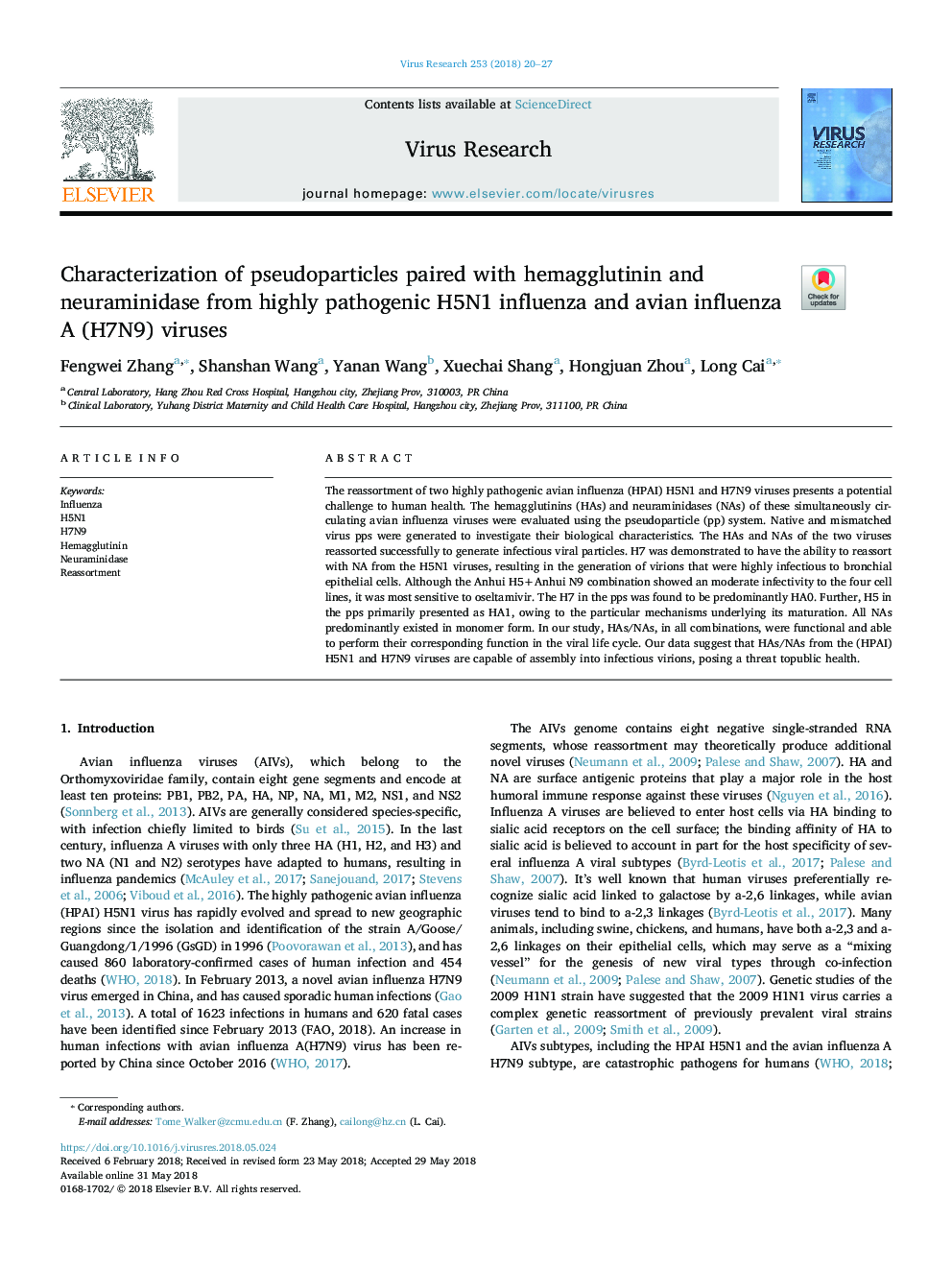| Article ID | Journal | Published Year | Pages | File Type |
|---|---|---|---|---|
| 8751712 | Virus Research | 2018 | 8 Pages |
Abstract
The reassortment of two highly pathogenic avian influenza (HPAI) H5N1 and H7N9 viruses presents a potential challenge to human health. The hemagglutinins (HAs) and neuraminidases (NAs) of these simultaneously circulating avian influenza viruses were evaluated using the pseudoparticle (pp) system. Native and mismatched virus pps were generated to investigate their biological characteristics. The HAs and NAs of the two viruses reassorted successfully to generate infectious viral particles. H7 was demonstrated to have the ability to reassort with NA from the H5N1 viruses, resulting in the generation of virions that were highly infectious to bronchial epithelial cells. Although the Anhui H5+Anhui N9 combination showed an moderate infectivity to the four cell lines, it was most sensitive to oseltamivir. The H7 in the pps was found to be predominantly HA0. Further, H5 in the pps primarily presented as HA1, owing to the particular mechanisms underlying its maturation. All NAs predominantly existed in monomer form. In our study, HAs/NAs, in all combinations, were functional and able to perform their corresponding function in the viral life cycle. Our data suggest that HAs/NAs from the (HPAI) H5N1 and H7N9 viruses are capable of assembly into infectious virions, posing a threat topublic health.
Related Topics
Life Sciences
Immunology and Microbiology
Virology
Authors
Fengwei Zhang, Shanshan Wang, Yanan Wang, Xuechai Shang, Hongjuan Zhou, Long Cai,
